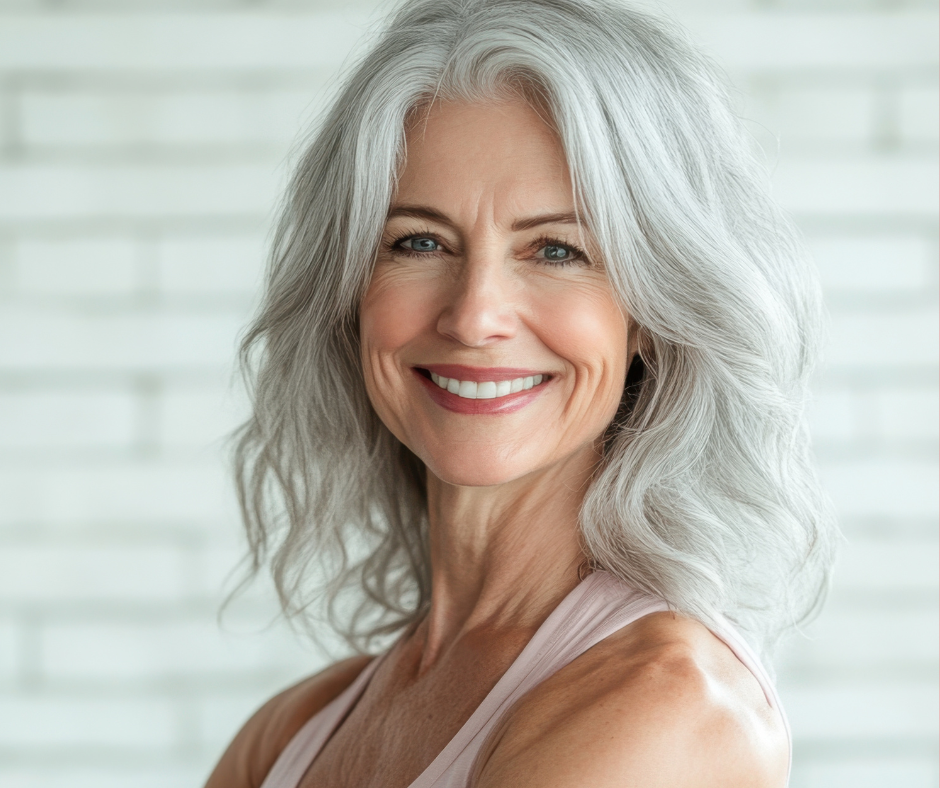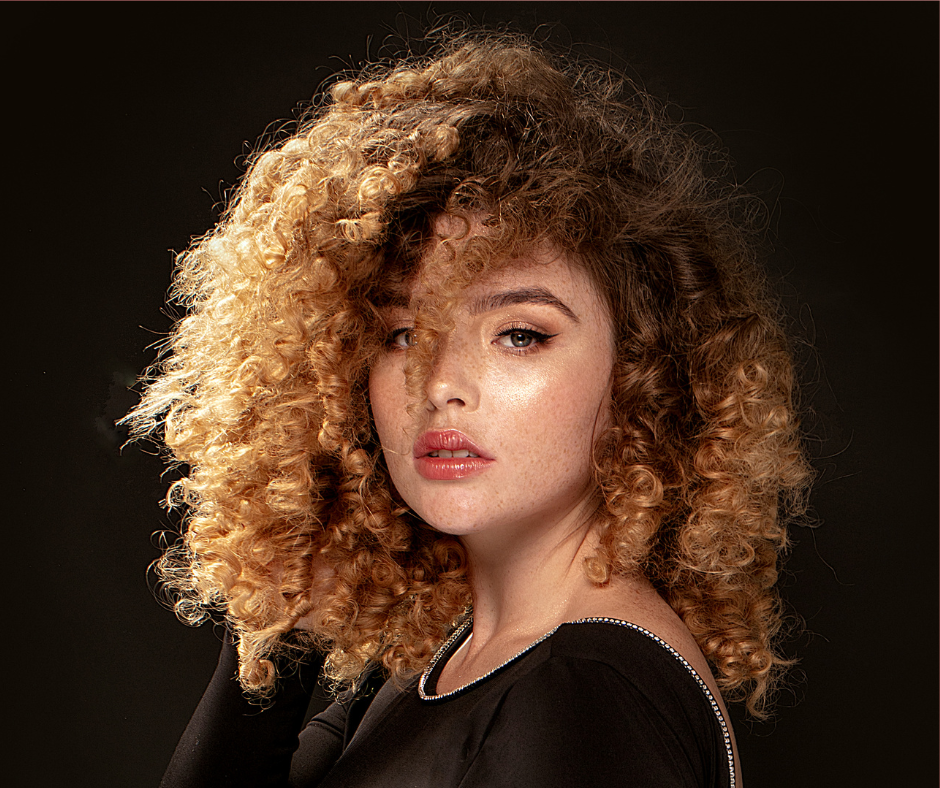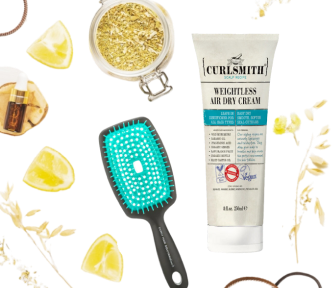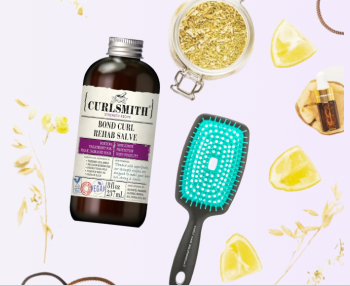Going grey can come with a lot of “wait, what?” moments and that’s completely normal. Your hair starts changing in ways you didn’t expect, and suddenly, it feels like you’re learning how to care for it all over again. And it doesn’t matter if you’re rocking your natural silver, grey, or white strands or choosing to colour them - those changes still show up.
The good thing is, we’ve got plenty of tips to help you figure it all out.
Let’s get into it.
Moisture is Non-Negotiable!
This isn’t just a tip. It’s a curl-changing necessity.
Moisture is already key for curly hair, but once your strands start going grey, it becomes even more important. Here’s why: melanin gives your hair its natural colour. As melanin fades with age, your hair loses pigment and often changes texture too. Grey, silver, or white curls tend to feel drier, rougher, and more prone to frizz.
That’s why moisture needs to be a regular part of your routine:
-
Deep condition once a week – non-negotiable for those coarse silvers and greys. It helps bring back softness and bounce.
-
Use a leave-in to keep your curls hydrated between washes if necessary.
-
Style with humectants that attract and hold moisture. A lot of stylers already include them, but it’s always good to check the label so you know what you’re getting. Look out for ingredients like glycerin, honey, hydrolyzed collagen, silk, keratin, propylene glycol, butylene glycol, hyaluronic acid, sorbitol, fructose, and agave nectar.
-
Seal it all in with oils or butters. Coconut oil works wonders for some people with grey hair because it’s known for adding shine and locking in moisture. But if it doesn’t suit your hair, try lighter oils like jojoba, argan, grapeseed, sweet almond, or marula. Some oils or even vitamin C (also called ascorbic acid on labels) can cause yellowing, especially if they’re not pure or are exposed to heat and sunlight. We recommend trying a patch test on the underside of your head first, just in case.
- Look for products that are made for or recommended for grey, silver, or white hair. The new Silver Slay line from Ecoslay is a great example of products that have been specifically created to support transitioning - or fully grey - hair.
Tone to Brighten
Yellowing is a common issue for grey, silver, and white hair. It doesn’t matter if your strands are naturally grey or coloured this way - sun exposure, heat styling, product buildup, pollution, and even minerals in your shower water can all leave behind a yellowish tint.
One of the easiest ways to tone it down is with a purple shampoo or conditioner. These contain violet pigments that help cancel out yellow tones and bring brightness back to grey, silver, or white hair. It works the same way it does for blondes, purple balances yellow on the colour wheel.
Since purple shampoos can be a bit drying, it’s best to use them once a week or every other wash, depending on what your hair needs. Leave it on for a couple of minutes, then rinse thoroughly. The AG Hair Sterling Silver Shampoo and Design.Me Fab.Me Blonde Fortifying Blonde Shampoo are both good options to try. If you're a diehard Innersense Organic Beauty fan, they have a great purple shampoo too.
Always follow up with a deep conditioner to bring the moisture back and keep your curls soft, defined, and manageable.
Clarify Your Hair
Clarifying is a must when it comes to caring for your curls. Grey hair tends to attract buildup more easily, and if you’re not clarifying regularly - which could be weekly, biweekly, or just depending on your hair - your curls can start to feel weighed down and lose their “oomph.”
The idea of clarifying might sound a little intense, but it’s really just about clearing out anything that’s blocking moisture or making your products less effective.
A few curl- and grey-friendly favourites include:
If you’re in a hard water area, it’s worth looking into a shower filter. Minerals like calcium and magnesium can build up on your hair, and over time, this can also contribute to - you guessed it - yellowing.
Dealing with mineral buildup? The Malibu C Hard Water Wellness is a solid go-to. Note that Malibu C products contain Vitamin C, which, as mentioned above, may cause discolouration on very light-coloured hair. We've never had a report of this from a customer but we wanted to warn you anyway! We recommend testing it out first before covering your whole head!

Protect Your Curls at Night
Nighttime care might seem optional, but it’s one of the best things you can do for your curls.
Grey hair is naturally more fragile and tends to be drier, so it needs a little extra love while you sleep. Protecting your curls overnight helps prevent breakage, frizz, and moisture loss (and honestly, it makes your morning routine way easier).
So how do you protect your hair? Silk or satin everything.
A bonnet, head wrap, or scarf will do the trick. If you prefer to skip headwear, a silk or satin pillowcase works just as well. You can even combine both for extra protection. The smooth fabric is what does the trick - it helps your hair retain moisture, cuts down on friction, and keeps tangles to a minimum.
It might seem like a small step, but staying consistent with your nighttime routine can make a big difference in how your curls look and feel, regardless of their texture, colour, or pattern.
Be Gentle With Heat Styling
If you’re using heat tools regularly, it might be time to slow things down. Grey hair doesn’t have as much melanin, which means it can burn more easily and if your curls are colour-treated, they’re already more fragile from the chemical processing. Basically, any heat damage hits harder than before.
That’s why heat styling needs to be approached with care.
Always use a heat protectant. It acts like sunscreen for your hair, shielding it from moisture loss and heat damage.
Here are a few great options:
Most heat protectants contain silicones, so you’ll want to follow up with a clarifying shampoo when needed to prevent buildup.
Also, keep the heat low:
-
Above 140°F? You’re starting to risk damage.
-
Above 350°F? You’re definitely causing damage.
-
430°F? That’s the temperature where hair melts.
More importantly, the less often you use heat, the better.
Rethink Your Product Line Up
The products that used to work perfectly might stop delivering the same results and that’s completely normal. As your hair changes, its needs can shift too.
Grey strands are often drier, coarser, or can even be finer in texture than your hair was before, which means your curls might respond better to products with more moisture and lighter hold.
It takes some trial and error to figure out what works, but you don’t have to overhaul your routine overnight. Start small, notice how your hair feels, and adjust as you go. Outgrowing products is part of the journey as you embrace your natural grey, silver, or white curls. The key is to stay flexible and focus on what your curls need today.

You Might Need More Protein
Protein treatments help strengthen the hair shaft, improve elasticity, and reduce breakage by giving your strands the structure they need. Many everyday products - like leave-ins, conditioners, and stylers - already contain small amounts of protein. When our hair feels coarser or drier, as many grey hairs do, we might sacrifice protein in our products for additional moisture, however the key is likely using a bit of both.
For more on how protein treatments work and how to spot them, check out this guide.
Show Your Scalp Some Love
As we age, our scalp produces less natural oil, which can lead to dryness, flaking, or itchiness.
To keep things balanced:
-
Massage your scalp regularly to boost circulation and encourage growth. Just a few minutes with your fingertips or a scalp massager can do wonders.
-
Don’t skip a good scalp serum. Two great ones to try: Curlsmith Scalp Stimulating Booster or As I Am Rosemary Oil.
Need help with your transitioning hair routine? Reach out to us at help@curlwarehouse.com for personalized assistance or visit us in store.








